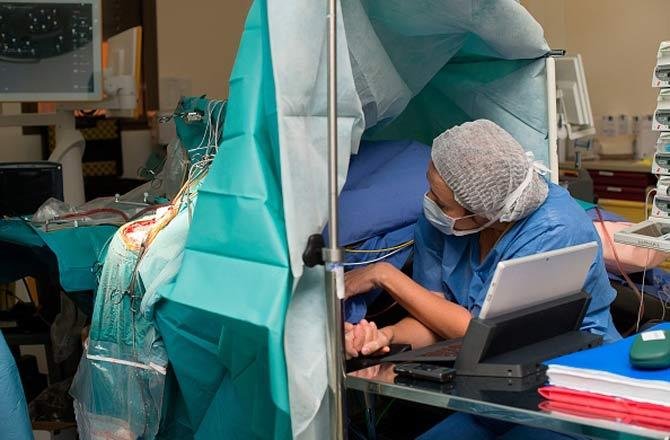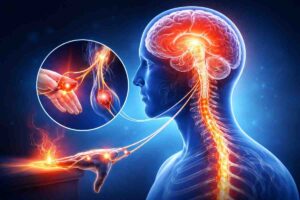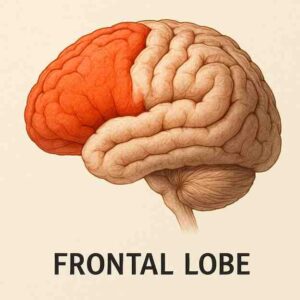Pump your fist, read from an iPad, play the violin, watch us open your skull on a screen – awake craniotomy as the ultimate entertainment
Keep opening and closing the fist of your right hand, we are almost done removing the tumour,” I told Ali, raising my voice more than usual to bypass the beep of the monitors. I was operating on his gently pulsating brain while he was completely conscious. “You’re doing great, stay with me for a little longer and keep clenching and releasing your fist.”
I spoke to him constantly while peeling off the last bit of the grey tumour that clearly stood apart from the glistening, healthy white matter of the brain. “Wallah!” he gasped as he turned his gaze and saw the sight on a screen in front of him, directly relaying the video of what was under the microscope. “Arise, awake, and stop not till the goal is reached,” I remembered Swami Vivekananda, as we achieved what we had set out to do.
Ali was a 50-year-old affluent Omani businessman with a degree from Harvard. His colon malignancy had shown signs of me tastasizing into the brain. Over the past few weeks, he had noticed a slight clumsiness in his right hand, and the scan showed a 3.5 cm ball of cancer straddled between the left pre-motor and motor cortex— the area of the brain responsible for movement of the right hand.
tastasizing into the brain. Over the past few weeks, he had noticed a slight clumsiness in his right hand, and the scan showed a 3.5 cm ball of cancer straddled between the left pre-motor and motor cortex— the area of the brain responsible for movement of the right hand.
When I had first examined him a few days prior and discussed the nature of his problem, I explained that since the tumour was in a critical location responsible for hand function, we could remove it while he was awake, as we continuously tested his hand. That way, if he developed even a subtle weakness, we’d stop excising the tumour to preserve function.
“Will I feel any ‘bain’?” was his first question. Arabs don’t enunciate the P.
“Only ‘betite’,” I said, hinting at little, showing him a tiny gap between my thumb and index finger.
“You see,” I continued, “the only thing in the head that feels pain is the scalp, which covers the skull bone. And, the covering of the brain. These we will numb with local anaesthesia. The brain itself feels no pain, and yet, all the pain-generating centres are smack within it.”
And it’s this that makes the organ the last and grandest biological frontier, the most complex thing we have tried comprehending in the universe. I am fascinated by the infinite potential of this three-pound jelly mass that we, as neurosurgeons, have the unprecedented joy of seeing daily, and yet, know so little about. Early in its history, awake craniotomy or the opening of the skull to access the brain while the patient was still conscious, was used for the treatment of epilepsy.
Archaeological records indicate that in ancient times, patients were treated for seizures by trepanation (drilling holes in the skull) to let out evil spirits and cure them of their inflictions. Centuries later, we have come full circle, refining the technique a wee bit. In India, we began using this technique in the early ’90s.
When tumours involve the speech and language portions of the brain, we need patients to talk to us throughout the procedure; they read, name, comprehend, and repeat tasks shown to them on an iPad, as we test all modalities of language. One such patient got so tired doing this, when the time came to remove the most critical part of the tumour, he fell asleep. We had to wait till he was awake and agreed to co-operate again.
There have also been some uplifting stories of musicians who have been asked to perform while in surgery, to ensure that their playing ability remained unharmed. Ambrož Bajec-Lapajne, a Slovenian operatic singer diagnosed with end-stage brain cancer, performed two couplets from Franz Schubert’s Gute Nacht during an awake craniotomy in 2015 at a Dutch clinic. This, I believe, goes perfectly with what American-Hungarian conductor George Szell once said: In music, one must think with the heart and feel with the brain.




